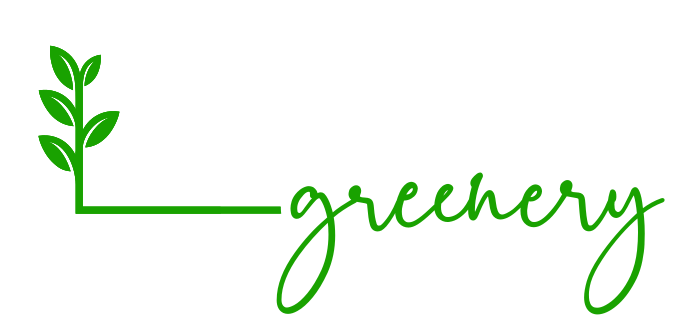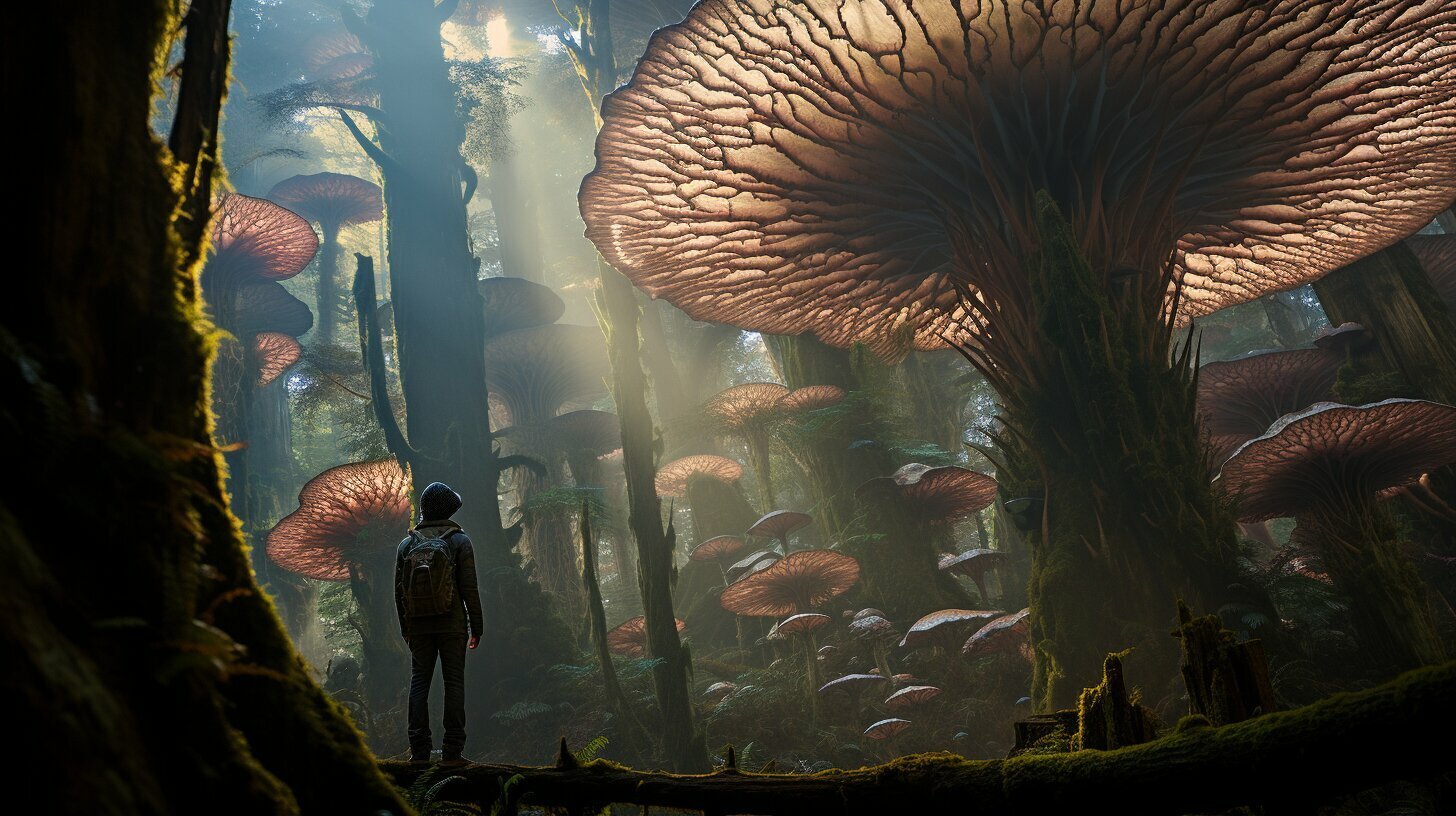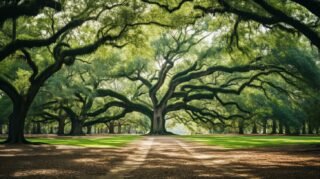Table of Contents
- Exploring the Edible Mushroom Varieties of the Japanese Cedar Tree
- Cultivation Techniques for the Mushroom Japanese Cedar Tree
- Unveiling the Health Benefits of Mushrooms from the Japanese Cedar Tree
- Mycelium Growth and the Forest Ecosystem
- Sustainable Forestry Practices and Mushroom Resources
- FAQ
- Q: What is the Mushroom Japanese Cedar Tree?
- Q: What are the edible mushroom varieties that grow on the Japanese Cedar Tree?
- Q: What are the culinary uses of mushrooms from the Japanese Cedar Tree?
- Q: How can the Mushroom Japanese Cedar Tree be cultivated?
- Q: What are the health benefits of mushrooms from the Japanese Cedar Tree?
- Q: How does mycelium growth contribute to the forest ecosystem?
- Q: What are the sustainable forestry practices associated with the Mushroom Japanese Cedar Tree?
If you’re interested in the world of mycology and the diverse range of mushrooms found in nature, you’ll want to pay attention to the Mushroom Japanese Cedar Tree. This unique species, native to Japan, is a botanical marvel that harbors a wide range of edible and medicinal mushrooms.
While many people are familiar with the common edible mushrooms found in grocery stores, there is so much more to discover within the world of mushroom cultivation. The Mushroom Japanese Cedar Tree provides a diverse array of mushroom species that are not commonly found in other areas of the world.
In this article, we’ll delve deeper into the fascinating world of the Mushroom Japanese Cedar Tree, exploring its edible mushroom varieties, cultivation techniques, and the health benefits associated with consuming mushrooms from this species. We’ll also discuss the importance of mycelium growth and a healthy forest ecosystem, as well as the significance of sustainable forestry practices when dealing with this unique botanical treasure.
Key Takeaways:
- The Mushroom Japanese Cedar Tree is a unique species that offers a diverse array of edible and medicinal mushrooms
- Exploring the cultivation techniques and health benefits of this species can enrich your knowledge of the natural world
- Understanding the importance of mycelium growth and sustainable forestry practices are crucial for maintaining a healthy forest ecosystem
Exploring the Edible Mushroom Varieties of the Japanese Cedar Tree
The Mushroom Japanese Cedar Tree is not only a botanical marvel but also a source of diverse edible mushrooms. The tree hosts several varieties of mushrooms that are a delicacy in Japanese cuisine and appreciated worldwide for their unique flavor and culinary benefits.
| Mushroom Variety | Culinary Uses |
|---|---|
| Shiitake | Commonly used in soups, stews, stir-fries, and as a meat substitute due to its meaty texture. |
| Maitake | Used for medicinal purposes as it is believed to boost the immune system and reduce inflammation. It is also used in soups, sauces, and as a side dish. |
| Oyster Mushroom | Used in stir-fries, soups, sauces, and as a side dish. It has a mild, delicate flavor and a velvety texture. |
| Enoki | Commonly used in salads, soups, and stir-fries. It has a mild, delicate flavor and a crunchy texture. |
The culinary uses of mushrooms from the Japanese Cedar Tree are versatile, making them a popular ingredient in several dishes. From soups and stews to sauces and side dishes, these mushrooms are flavorful and nutritious. They are also a suitable meat substitute for those following a vegetarian or vegan diet.
Exploring the Edible Mushroom Varieties of the Japanese Cedar Tree
There are several ways to harvest mushrooms from the Japanese Cedar Tree. One method is to wait till the mushrooms grow naturally and then harvest them as they appear. Another way is to artificially propagate the tree and increase mushroom production. However, it is essential to follow proper cultivation techniques to prevent damage to the tree and ensure a sustainable yield of mushrooms.
In conclusion, the Mushroom Japanese Cedar Tree is not only a botanical marvel but also an excellent source of edible mushrooms with various culinary uses. Shiitake, maitake, oyster, and enoki mushrooms are just a few of the varieties that can be harvested from this tree. Whether you are a food enthusiast or a health-conscious individual, exploring these mushrooms can enrich your knowledge and culinary experience.
Cultivation Techniques for the Mushroom Japanese Cedar Tree
The Mushroom Japanese Cedar Tree is a unique botanical marvel that is gaining popularity for its edible and medicinal mushroom varieties. Cultivating this tree requires special techniques and maintenance practices to ensure optimal growth and harvest. Here are some useful tips on cultivating the Mushroom Japanese Cedar Tree.
Optimal Growing Conditions
The Mushroom Japanese Cedar Tree grows best in areas with high humidity and rainfall. It also prefers well-drained soil that is rich in organic matter. The tree requires partial shade to thrive, making it an ideal candidate for agroforestry systems. The ideal temperature range for optimum growth is between 20-28 degrees Celsius.
Propagation Methods
Propagation of the Mushroom Japanese Cedar Tree can be achieved through seeds or cuttings. Seeds can be obtained from mature mushrooms that have been harvested from the tree. Cuttings can be taken from the tree’s branches and rooted in a suitable rooting medium, such as perlite or vermiculite. The cuttings need to be kept moist and in a humid environment until they have developed roots, which can take several weeks.
Maintenance Practices
The Mushroom Japanese Cedar Tree requires regular maintenance practices to ensure optimal growth and harvest. This includes pruning to maintain the desired shape and size of the tree. It is important to remove any dead or diseased branches to prevent the spread of pests and diseases. The tree also requires regular watering and fertilization to ensure it receives the necessary nutrients for growth.
Cultivating the Mushroom Japanese Cedar Tree may require some patience and effort, but the rewards are well worth it. With the right growing conditions, propagation methods, and maintenance practices, you can enjoy a bountiful harvest of nutritious and delicious mushrooms.
Unveiling the Health Benefits of Mushrooms from the Japanese Cedar Tree
The Mushroom Japanese Cedar Tree is renowned for its unique and diverse range of edible mushrooms, each with their own distinct flavor and texture. Beyond their culinary uses, these mushrooms possess a multitude of health benefits that have been celebrated for centuries.
Rich in protein, amino acids, and valuable antioxidants, mushrooms from the Japanese Cedar Tree have been found to boost the immune system, reduce inflammation, and aid in the prevention of chronic diseases. Specifically, Shiitake mushrooms have been found to contain compounds that can lower cholesterol levels and regulate blood sugar, while Maitake mushrooms possess antitumor and antimicrobial properties.
Moreover, consumption of mushrooms from the Japanese Cedar Tree has been linked to improvements in cardiovascular health, cognitive function, and skin health. This is due to their high levels of B-vitamins, which help to maintain healthy skin and hair, and their ability to stimulate the production of nerve growth factor, essential for cognitive function.
Additionally, mushrooms from the Japanese Cedar Tree have been used in traditional medicinal practices for their anti-inflammatory, antiviral, and antibacterial properties. They have been found to promote digestion, boost energy levels, and aid in stress relief.
Overall, the Mushroom Japanese Cedar Tree is a botanical marvel that not only provides a diverse range of culinary delights but also offers an array of health benefits to enrich your knowledge and well-being.
Mycelium Growth and the Forest Ecosystem
The Mushroom Japanese Cedar Tree is not just an incredible source of edible mushrooms; it also plays a vital role in the forest ecosystem through the growth of mycelium. Mycelium is the vegetative part of the fungus, consisting of a network of fine, branching threads that grow through soil, wood, and other organic matter.
In the case of the Mushroom Japanese Cedar Tree, mycelium growth occurs within the root systems of the tree, forming a symbiotic relationship known as mycorrhizal association. This partnership is essential for the survival and health of the tree, as mycelium helps to increase the tree’s access to nutrients and water from the soil. In turn, the tree provides the mycelium with carbohydrates, which it cannot produce on its own.
Beyond its role in supporting the Mushroom Japanese Cedar Tree, mycelium growth is a critical component of the forest ecosystem. It helps to break down and recycle organic matter, including dead plant material and fallen trees, releasing nutrients back into the soil. This process supports the growth of other plants and trees, contributing to overall forest health and diversity.
Furthermore, mycelium growth contributes to the overall fungal diversity in the forest ecosystem. Fungi play an essential role in the decomposition process, which is crucial for nutrient cycling and carbon storage. They also form mutualistic relationships with other plant species, contributing to the overall stability and resilience of the forest ecosystem.
In summary, mycelium growth in the Mushroom Japanese Cedar Tree and the overall forest ecosystem is essential for maintaining a healthy and diverse environment. By cultivating and preserving these natural systems, we can continue to enjoy the benefits of the Mushroom Japanese Cedar Tree’s unique and delicious mushrooms while also supporting the health and well-being of the forest ecosystem.
Sustainable Forestry Practices and Mushroom Resources
The Mushroom Japanese Cedar Tree is a botanical marvel that holds immense value for both culinary and medicinal purposes. However, it is crucial to ensure its sustainability through responsible forestry practices.
Sustainable Forestry Practices
When harvesting mushrooms from the Japanese Cedar Tree, it is important to do so selectively and without damaging the tree’s bark or health. This can be achieved by using sharp tools and cutting the mushrooms at the base of the stem, leaving the spores intact. It is also recommended to avoid harvesting during the tree’s dormant season.
Sustainable forestry practices also involve maintaining the forest ecosystem’s health by reducing the use of pesticides, herbicides, and other chemicals that can harm the tree’s natural habitat. This requires an understanding of the tree and its symbiotic relationship with the forest ecosystem.
Mushroom Resources
Learning about mushrooms can be an exciting and enriching experience. There are several resources available online and offline to help broaden your knowledge on the subject.
For instance, the North American Mycological Association offers courses, identification guides, and workshops on mushrooms. The organization also conducts research on the ecological and cultural aspects of fungi, providing a comprehensive understanding of the ecosystem’s importance.
Books, journals, and scientific papers are also great resources to delve deeper into mushroom cultivation and its different varieties. The Mushroom Cultivator by Paul Stamets is a renowned resource on mushroom cultivation, providing valuable insights into mushroom propagation techniques, cultivation, and maintenance.
By maintaining sustainable forestry practices and utilizing available resources, we can ensure the longevity of the Mushroom Japanese Cedar Tree and its diverse range of mushrooms. This, in turn, contributes to the preservation of the forest ecosystem and its biodiversity for generations to come.
FAQ
Q: What is the Mushroom Japanese Cedar Tree?
A: The Mushroom Japanese Cedar Tree is a botanical marvel known for its unique ability to host various edible mushroom varieties.
Q: What are the edible mushroom varieties that grow on the Japanese Cedar Tree?
A: The Japanese Cedar Tree is known to host a wide range of edible mushroom varieties, including Shiitake, Maitake, Enoki, and Matsutake mushrooms.
Q: What are the culinary uses of mushrooms from the Japanese Cedar Tree?
A: Mushrooms from the Japanese Cedar Tree are highly valued in culinary traditions. They are used in various dishes such as stir-fries, soups, stews, and as toppings for sushi and noodles.
Q: How can the Mushroom Japanese Cedar Tree be cultivated?
A: Cultivating the Mushroom Japanese Cedar Tree requires providing optimal growing conditions, such as shade and humidity, and following propagation methods like spore inoculation or stem cuttings. Regular maintenance practices, such as pruning and watering, are also essential.
Q: What are the health benefits of mushrooms from the Japanese Cedar Tree?
A: Mushrooms from the Japanese Cedar Tree are packed with essential nutrients and possess potential medicinal properties. They are known to boost the immune system, support cardiovascular health, and have antioxidant and anti-inflammatory effects.
Q: How does mycelium growth contribute to the forest ecosystem?
A: Mycelium growth plays a vital role in the forest ecosystem, including the Mushroom Japanese Cedar Tree. It helps in nutrient cycling, soil formation, and supports overall fungal diversity, contributing to the health and sustainability of the forest.
Q: What are the sustainable forestry practices associated with the Mushroom Japanese Cedar Tree?
A: Sustainable forestry practices for the Mushroom Japanese Cedar Tree involve responsible harvesting methods, reforestation efforts, and ensuring the preservation of the forest ecosystem. These practices help maintain the longevity and availability of this unique resource.







